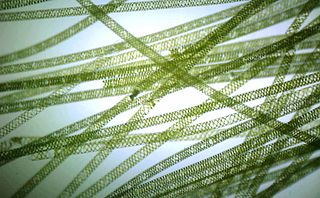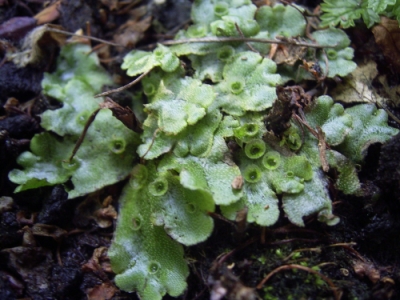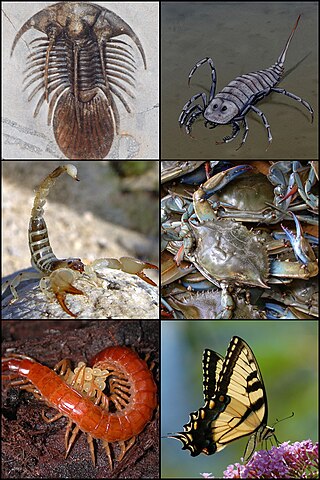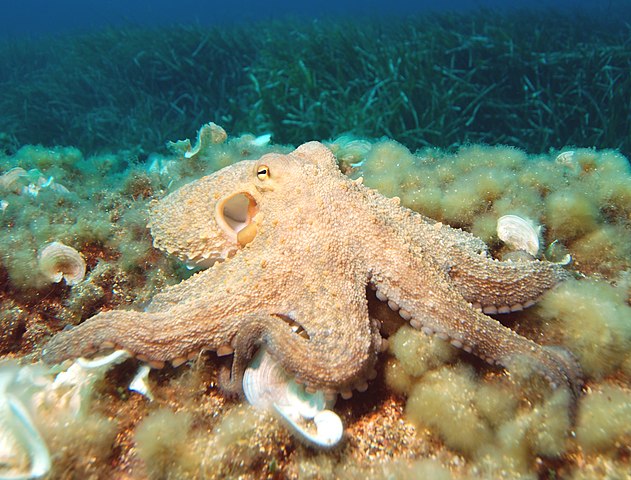Diversity In Living Organisms - CBSE - Class 9 - Science (CH7)
DIVERSITY IN LIVING ORGANISMS
Q1(CBSE 2011): What do you mean by bio diversity?
Answer: Bio-diversity means the existence of a wide variety of species or other taxa of plants, animals and micro-organisms in a natural habitat within a specific environment.
Q2(NCERT): Why do we classify organisms?
or
Q(CBSE 2011): Why is there a need for classification and systematic naming of living organisms?Answer: Classification helps us understand biodiversity better way. Biodiversity have direct and indirect economic benefits to humans as well as to our ecosystem. Systematic study of such biodiversity is essential to better understand the inter-relationships in our ecosystems. Following are the needs to classify them:
- Plants and animals have valuable genetic variation information. It will help us understand the ways evolution take place.
- Humans often benefits from plants and animals in different ways. Systematic study will help exploring other potential benefits.
- Certain species warn us of imbalances in our ecosystem. e.g. white-rumped vultures became almost extinct because of use of drug brufen (diclofenac) in domestic animals. When vultures ate these dead animals, it led to their kidney failures. Systematic study of the organisms would help in restoring the balance in their ecosystems.
- Plants and animals have been the inspiration for technology and engineering design. e.g. SONARS and RADARS work on the same acoustics principles as used by bats. Classification will help us revealing such more inspirations.
- It is estimated that the Earth has almost 8.8 million animal, plant, and fungi species, but we’ve only discovered less than a one fourth of this. Classification gives a system for identification of known and unknown organisms.
Answer: Following are the advantages of classification:
- Classification helps us identify the living organisms easily.
- It makes study of such a wide variety of bio-life in systematic manner.
- It help us learning different plants and animals, similarities and dissimilarities among them.
- Enables us understand how complex organisms evolve over the time.
- Classification help us understand the inter-relationships among different groups.
- It forms the basis of other branches of bio-sciences like bio-geography, environmental biology, ecology etc.
- It also provides a systematic way to identify known and unknown organisms.
- Classification systems are adapted internationally. This aids communication between scientists.
Q4: Define Taxonomy.
Answer: The branch of science that classify living organisms among different categories or groups is called taxonomy. Taxonomy is the science of identifying and naming species and organising them into systems of classification.
Q5: Who is known as father of taxonomy?
Answer: Carl Linnaeus
Q6(NCERT): Give three examples of the range of variations that you see in lifeforms around you.
Answer: The present bio-diversity is the outcome of millions years of evolution. We find various kinds of range of variations among bio-life such as:
- Variation in terms of size: Microorganisms are very small of size of micrometers to 100m high large redwood trees and blue whales (30 meters in length).
- Variations in terms of age: Some organisms like mosquitoes do not live more than two days while animals like tortoise and elephants live upto 100 years.
- Variations in terms of nutrition: Some animals are herbivores, others are carnivores or omnivores.
- Variations in colours: Worms are colourless, on the other hands flowers, butterflies, different types of birds are full of colours.
Q7: What is the primary reason for such a huge diversity we find in animals and plants?
Answer: Biological or organic evolution
Q8(NCERT): Which do you think is a more basic characteristic for classifying organisms?
(a) the place where they live.
(b) the kind of cells they are made of. Why?
Answer: Option (b) the kind of cells they are made of, is the more basic characteristic for classifying organisms. It is for the following reasons:
- Classifying organisms based on habitat is misleading. Apart form common habitat, there is no other common features among them. e.g. Lion and Rabbit both live on land but they differ from each other a lot. Further sub-classification is not possible.
- Cells are the functional and structural unit of life. Primarily we can differentiate organisms are unicellular and multicellular. Further sub-classification or logical sequence is possible based on cell types, its complexity etc.
Answer: Cell design is the basic characteristic of first division of organisms. It divides organisms primarily as prokaryotes and eukaryotes.
Q10: Define Taxon.
Answer: Taxon is a unit of classification of organisms which can be recognized to a definite category at any level of classification, e.g., fishes, birds, insects, etc.
Q11(NCERT): On what bases are plants and animals put into different categories?
Answer: Following bases are used to differentiate plants and animals:
- Cell Design: Plants have cell wall while animal cells do not.
- Nutrition: Plants make their own food (photosynthesis, autotrophic) while animals do not (hetrotrophic).
- Body design: e.g.Plants can't move while animals can.
Q12: Who wrote the book The Origin of Species?
Answer: Charles Darwin - 1859 - He gave the idea of evolution.
Q13: Which region of the earth is called the region of megadiversity?
Answer: The warm and humid tropical regions of the earth, between the tropic of Cancer and the tropic of Capricorn, are rich in diversity of plant and animal life. This is called the region of megadiversity.
Q14: Name five countries that lie in the region of megadiversity.
Answer: Brazil, Colombia, Ecuador, Peru, Mexico, Zaire, Madagascar, Australia, China, India, Indonesia and Malaysia.
Q15: Define evolution.
Answer: Evolution is a complex process by which the characteristics of living organisms change over generations to generations and the traits are passed from one generation to the next. One of the main reason for diversity in bio-life is attributed to evolution.
Q16: Based on evolution, primarily how organisms are categorized?
Answer: Based on evolution, organisms are divided into two groups:
- Primitive or lower organisms and
- Advanced or higher organisms.
Q17(NCERT): Which organisms are called primitive and how are they different from the so-called advanced organisms?
Answer:
| Primitive Organisms | Advanced Organisms |
|---|---|
| 1. Simple body organisation. | 1. Complex body organization. |
| 2. Ancient body changes haven't changed much | 2. Recent body design. |
| 3. Considered at first ladder on evolutionary scale. | 3. Considered at successive ladders on evolutionary scale. |
Q18(NCERT): Will advanced organisms be the same as complex organisms? Why?
Answer: Yes. Because of complex body designs, we can consider advanced programs as complex organisms. Additionally, complexity in design of advanced organisms increases over evolutionary time.
Q19: Name the book written by Carolus Linnaeus on classification of organisms.
Answer: Systema Naturae
Q20: In how many kingdoms Carolus Linnaeus diving living beings?
Answer: Two kingdoms i.e. Plantae (Plants) and Animalia (Animals)
Q21: Name the levels of classification proposed by Linnaeus. What happens to similarities among organisms as we go from top to bottom level?
Answer: Classification systems as proposed by Linnaeus use a hierarchical system in which organisms are placed into groups, at different levels, according to the features they share. These groups or levels are(from top to bottom):
- Kingdom
- Phylum
- Class
- Order
- Family
- Genus
- Species
✍ How to memorize classification levels?
King ➤ Phil-nnaeus ➤ Classed ➤ Ordinary ➤ Families as ➤ Generous and ➤ Special
Kingdom ➤ Phylum ➤ Class ➤ Order ➤ Family ➤ Genus ➤ Species
King ➤ Phil-nnaeus ➤ Classed ➤ Ordinary ➤ Families as ➤ Generous and ➤ Special
Kingdom ➤ Phylum ➤ Class ➤ Order ➤ Family ➤ Genus ➤ Species
Q22(NCERT): In the hierarchy of classification, which grouping will have the smallest number of organisms with a maximum of characteristics in common and which will have the largest number of organisms?
Answer: Taxon Species has the smallest number of organisms with maximum number of characteristics in common. While taxon Kingdom will have the largest number of organisms with maximum of differences among its members.
Q23: Name the scientist who created the third kingdom for all microscopic unicellular organisms. What did he call it?
Answer: After Linnaeus proposed two kingdoms, German biologist, Ernst Haeckel proposed third kingdom for all microscopic unicellular organisms and called it Protists.
Q24: Who identified the Fungi as a separate multicellular eucaryotic kingdom and introduced five kingdoms? Name the five kingdoms.
Answer: R. H. Whittaker proposed five kingdoms and identified Fungi as a separate multicellular eucaryotic kingdom. The five kingdoms are:
- Monera: prokaryotic bacteria, blue-green algae or cyanobacteria
- Protista: unicellular protozoans like fungi, diatoms and algae
- Fungi: includes multi-nucleate fungi (yeast, mushroom)
- Plantae: multicellular eukaryotes includes green plants and advanced algae
- Animalia: multicellular animals
Q25(NCERT): Explain the basis for grouping organisms into five kingdoms.
Answer: The basis for grouping organisms into five kingdoms is:
- Cell Structure: It has two major cellular structural divisions within living things i.e. prokaryotes and eukaryotes.
- Number of Cells: It divides into unicellular and multicellular.
- Mode and source of nutrition: Organisms are divided based on mode of nutrition i.e. autotrophic and heterotrophic.
- Phylogenetic Relationship and Body Organization: Based on body organization and evolution organisms are divided into simple and complex organisms.
 |
| Five Kingdoms Classification |
Q26(NCERT): What is the criterion for classification of organisms as belonging to kingdom Monera or Protista?
Answer: Organisms which do not have well defined cell structure (prokaryotic cells) are grouped under Kingdom Monera. Organisms which are unicellular and eukaryotes are placed under Kingdom Protista.
Q27(NCERT): In which kingdom will you place an organism which is singlecelled, eukaryotic and photosynthetic?
Answer: Kingdom Protista.
Q28: In which kingdom you will place an organism which is multicellular, eukaryotic, non-green heterotroph or saprophytic, lacks chlorophyll and has absorptive mode of nutrition?
Answer: Kingdom Fungi
Q29: In which kingdom, you will place an organism which is multicellular, eukaryotic, heterotroph, lacks chlorophyll and has ingestive mode of nutrition.
Answer: Kingdom Animalia.
 |
| Three domain classification |
Answer: He divided the Monera kingdom into Archaebacteria (or Archaea) and Eubacteria (or Bacteria). He also regrouped the five kingdoms into three domains i.e. Bacteria, Archaea and Eucaryotes.
Q31: Name the organisms which are outside the classification.
Answer: Viruses and Prions.
Q32: According to the five-kingdom system, which kingdom contains organisms whose structure is composed of prokaryotic cells?
Answer: Kingdom Monera.
Q33(CBSE 2011): Blue green algae are classified with bacteria and placed in kingdom Monera.
Answer: Blue green algae or Cyanobacteria are photosynthetic bacteria but they are placed under kingdom Monera because:
- they are unicellular.
- they show prokaryotic morphological structure i.e. not well defined nucleus
Q34(CBSE 2011): (a) What are saprophytes?
(b) Name the kingdom to which they belong.
(c) What is the cell wall of fungi made up of?or
Q(CBSE 2011): How do the saprophytes get their food? Give two examples of a saprophyte.
Answer: (a) Saprophytes are the organisms which use use decaying organic material as food. Examples are: Rhizopus, yeast, mushrooms, Aspergillus, Penicillium, Agaricus.
(b) They belong to kingdom Fungi.
(c) They have cell-walls made of a tough complex sugar called chitin.
 |
| Lichens credits:wikipedia |
Q35: What is Symbiotic? Give example of organisms which exhibit this relationship.
Answer: Some fungal species live in mutually dependent relationship with blue green algae. Such
relationships are called symbiotic. These symbiobic life forms are called lichens. In lichens, the fungal component is called the mycobiont and the algal component is known as the phycobiont.
Q36: Classify the following organisms into their respective kingdoms as per Whittaker's five-kingdom system.
humans, mushroom, herbs, amoeba, E.coli, euglena, mold, birds, insects, bushes, paramecium, trees, dogs, streptococcus.
Answer:
Kingdom Monera: E.coli, streptococcus (bacteria)
Kingdom Protista: amoeba, euglena, paramecium
Kingdom Fungi: mushroom, mold,
Kingdom Plantae: herbs, bushes, trees
Kingdom Animalia: humans, birds, insects, dogs
Q37(NCERT): What are the major divisions in the Plantae? What is the basis for these divisions?
Answer: Major division in kingdom Plantae are:
- Thallophyta
- Bryophyta
- Pteridophyta
- Gymnosperms
- Angiosperms
➊ The first level of classification among plants depends on whether plant body is well differentiated or not.
➋ The next level of classification is based on whether the differentiated body has special vascular tissues (xylem and phloem) for the transport of water and other substances.
➌ Further classification is based on the ability to bear seeds and
➍ Further it is classified whether the seeds are naked or enclosed within fruits.
 |
| Classification of Plants |
 |
| Spirogyra |
Answer: Algae : Spirogyra, Ulothrix, Cladophora and Chara
Q39: Why are Thallophytes called non-embryonic plants?
Answer: Thallophytes have simple body (thallus) and their gametes are unicellular. After fertilization the zygote does not form embryo. Therefore these plants are called anon-embryonic plants.
Q40: Which division among plants has the simplest organisms?
Answer: Thallophyta division.
Q41: What is a thallus?
Answer: Thallophyte has a simple plant body. The Plant body is not differentiated into root, stem and leaves and is called thallus.
Q42(CBSE): Why bryophytes are called the amphibians of the plant kingdom?
Answer: Bryophytes are known as 'amphibians of the plant kingdom' because these plants can live in soil but are dependent on water for sexual reproduction.Usually they are found in humid and damp areas.
 |
| Red Moss (credits:wikicommons) |
Q43: List important characteristics (at least three) of bryophytes.
Answer: Characteristics of bryophytes:
- Plant body is differentiated to form stem and leaf like structures.
- These are considered first true plants.
- These are called amphibians of the plants since they live in soil and water both.
- There is no specialised tissue for the conduction of water and other substances from one part of the plant body to another (no vascular system).
- An embryo is formed upon fertilization. Water is necessary for fertilization.
 |
| Moss in dense forest credits:wikipedia |
Q44: Give examples of bryophytes.
Answer: Funaria (moss) and Marchantia (liverwort)
 |
| Marchantia (liverwort) |
Q45: What are the uses of bryophytes?
Answer: Bryophytes have good water holding capacity, therefore these are used in horticulture. They are used in medicines, construction material, smoke filters etc.
Q46: How are Pteridophytes' bodies organised?
Answer: The plant body a Pteridophyte is differentiated into roots, stem and leaves and has a simple vasuclar system for the conduction of water and other substances from one part of the plant body to another.
 |
| Marsilea (Pteridophyte) image credits:wikicommons and University of Ovideo |
Q47(CBSE 2011): How do thallophytes and pteridophytes differ from each other? Write two differences.
Answer:
| Num. | Thallophytes | Pteridophytes |
|---|---|---|
| 1. | Plant body is not well differentiated. | Plant body is differentiated into root, stems and leaves. |
| 2. | No vascular system present for conduction of water and food substances. | Simpler vascular system present for conduction of water and substances. |
| 3. | Mostly aquatic (algae) | Mostly land plants |
| 4. | Spirogyra, Chara etc. | Ferns, Marsilea etc. |
Q48: Name the plants that are called "First vascular land plants".
Answer: Pteridophytes.
Q49: On what basis plants are divided into two sub-kingdoms?
Answer: Whether the reproductive organs are conspicuous (clearly visible) or not, based on this plants are divided into two sub-kingdoms i.e.
- Cryptogamae: Non flowering or seedless plants. Includes Thallophytes, bryophytes and pteridophytes.
- Phanerogamae: Flowering plants. Includes Gymnosperms and Angiosperms.
Q50(NCERT): How are pteridophytes different from the phanerogams?
Answer:
| Num. | Pteridophytes | Phanerograms |
|---|---|---|
| 1. | Have inconspicuous reproductive organs. | Well differentiated reproductive parts. |
| 2. | Produce naked embryos called spores. | Produce seeds. |
| 3. | Simple Vascular System | Highly differentiated vascular system |
| 4. | Examples: Marsilea, Adiantum etc. | Examples: Pine, Cycas, Deodar, Sunflower, Maize etc. |
 |
| Deodar (Gymnosperm) credits:wikipedia |
Answer: Gymnosperms and Angiosperms
Q52: What are naked-seeded plants are called?
Answer: Gymnosperms.
Q53: Give two examples of Gymnosperms.
Answer: Pines and Deaodar.
Q54(CBSE 2011): Define Cryptograms.
Answer:
- Cryptograms are plants with hidden (inconspicuous) reproductive organs.
- The thallophytes, the bryophytes and the pteridophytes collectively called cryptograms.
- External flowers or seeds are absent and they have naked embryos called spores.
Answer:
| Num. | Gymnosperms | Angiosperms |
|---|---|---|
| 1. | Naked seed i.e. seeds not enclosed within fruit. | Seeds are enclosed with fruit walls (coltyledons). |
| 2. | Flowers are represented as unisexual cones which produce spores. | Microspores are anthers while megaspores are ovules. |
| 3. | Ovules not located in ovary | Ovules present inside ovary. |
| 4. | Examples: Pines, Cycas, Deodar etc. | Examples: Sunflower, Maize, Wheat, Pea, bean etc. |
Q56: How Angiosperms are divided further?
Answer: Angiosperms are divided into two groups on the basis of the number of cotyledons present in the seed.
- Monocotyledonous or monocots: These are the plants with seeds having a single cotyledon, e.g. maize, wheat, rice, etc.
- Dicotyledonous or dicots: These are plants with seeds having two cotyledons, e.g. pea, gram, bean, etc.
Answer:
| - | Monocots | Dicots |
|---|---|---|
| Cotyledons | One Cotyledon | Two Cotyledons |
| Veins in leaves | Usually Parallel | Generally netlike |
| Flower Parts | In general multiple of three | In fours or five |
| Arrangement of primary vascularbundles in stem | Scattered | In a ring |
Q58: What are the general characteristics found in all animals?
Answer: General characteristics found in all animals are:
- All animals are multi-cellular, eukaryotic and heterotrophic.
- All animals exhibit locomotion.
- Most of the animals have sense organs and nervous system.
- Nutrition is generally ingestive.
- Reproduction is generally sexual.
 |
| Kindom Animalia is divided into nine phyla |
Q59: In how many Phyla, the animal kingdom is divided into?
Answer: Kindom Animalia is divided into nine phyla i.e.
- Porifera (sponges)
- Coelentrata (jellyfishes, corals...)
- Platyhelminthes (flat worms)
- Nematoda (round worms)
- Annelida (earthworms)
- Arthropoda (insects, spiders, crabs etc.)
- Mollusca (snails, oysters etc.)
- Echinodermata (starfishes, sea urchins etc.)
- Chordata (animals with backbone)
(i) Spider
(ii) Cockroach
(iii) Prawn
(iv) Housefly
Answer: Arthopada
Q61(CBSE 2011): Write two important characteristics of sponges (Phylum: Porifera)
.jpg/179px-Aplysina_archeri_(Stove-pipe_Sponge-pink_variation).jpg) |
| Sponges credits:wikicommons |
Answer: Important characteristics of sponges are:
- simplest multi-cellular animals.
- most of them are marine except spongilla which is fresh water.
- non-motile and attached to support
- organisms with holes or ‘pores’, all over the body with canal systems.
- canal system of the body helps in circulating water throughout the body to bring in food and
oxygen. - animals are covered with a hard outside layer or skeleton.
- body design involves very minimal differentiation and division into tissues.
 |
| Spongilla (freshwater) credits:wikicommons |
Q62: What is osculum?
Answer: The body of sponge is porous and the pores are called ostia. Single large opening or pore is
called the osculum.
Q63: Do sponges have nervous system?
Answer: No
Q64: Give examples of Porifera or Sponges.
Answer: Euplectelia, Sycon, Spongilla
 |
| Sea Anemones credits:wikcommons |
Q65: Identify the phylum having following characteristics: multi-cellular, radially symmetrical, aquatic, hollow gut.
Answer: Phylum Coelenterata
Q66(CBSE 2011): What are four main features of phylum coelenterata?
Answer: Main features of phylum coelenterata:
- Aquatic habitat (marine + freshwater)
- radially symmetrical
- Show more body design differentiation.
- Sac-like body cavity (coelenteron) with a single opening to the outside for ingestion and egestion.
- First of multicellular animals which possess tissue level organisation with a distinct division of labour.
- Body wall made up of two layers (diploblastic), of which outer is called ectoderm and inner is endoderm. Between these two layers found jelly like substance mesoglea.
- Surrounding the mouth tentacles are found, that helps in locomotion and to catch the prey.
- Some of the species live in colonies (corals), while others have a solitary life-span (Hydra).
Q67: 'Animals belong to phylum coelenterata are diploblastic.' What do you mean by the term diploblastic?
Answer: Diploblastic means animals having two germ layers. Body walls of animals of phylum coelenterata are made up of two layers, of which outer is called ectoderm and inner is endoderm. Between these two layers found jelly like substance mesoglea.
Q68(CBSE 2011): Label A to H in the given diagram of hydra.
Answer:
- Tentacles
- Mouth
- Stinging cells
- Epidermis
- Mesoglea
- Endoderm
- Body Cavity
- Foot
Q69: Which animal phylum is commonly called as flatworms?
Answer: Platyhelminthes (Platy = flat, helminth = worms)
Q70: Which animal phylum is considered to be first triploblastic animals?
Answer: Platyhelminthes. Animals of this phylum are the first simplest triploblastic animals. They have three layers i.e. endoderm, mesoderm and ectoderm.
 |
| Fresh water Planaria credits:wikicommons |
Answer:
- Mostly parasitic
- First simplest triploblastic animals i.e. having three layers of body cells.
- Bilaterally symmetrical
- No true internal body cavity or coelom
- Body is dorsoventrally flattened
- Examples: Planaria, Liverfluke, Tapeworm
Q72(NCERT): How do poriferan animals differ from coelenterate animals?
Answer:
| Num. | Poriferan Animals | Coelentrate Animals |
|---|---|---|
| 1. | Cellular level organization. | Tissue level organization. |
| 2. | Mostly marine and non-motile. | Aquatic either soliary life or colonial life. |
| 3. | Examples: Spongilla, Euplectelia etc. | Examples: Hydra, sea anemones, corals etc. |
Q73: Which phylum is commonly called roundworms or pinworms?
Answer: Nematoda or Aschelminthes
Q74: Give examples of animals belong to Nematoda.
Answer: Ascaris (intestinal roundworm), Wuchereria (filarial worm), Enterobium (pinworm).
Q75: Name a parasitic disease caused by members of Nematoda.
Answer: Elephantiasis caused by filarial worms (Wuchereri).
 |
| Leech credits:wiki commons |
Answer: Annelida
Q77: Leeches and Earthworms belong to which phylum?
Answer: Annelida
Q78(CBSE 2011): Differentiate between Annelida and Nematode.
Answer:
| Num. | Nematoda | Annelida |
|---|---|---|
| 1. | Tissues but no real organs. | True organs packaged in body structure. |
| 2. | Body Cavity is not true coelom (pseudocoelom) | True body Cavity |
| 3. | Body is cylindrical | Body is segmented. |
| 4. | e.g. Ascaris, Wucharia | e.g. Leeches, Earthworms, Nereis |
Q79: Name the largest group (phylum) of animals.
Answer: Arthropoda (animals with jointed legs). It includes nearly 9 million species.
 |
| Arthropoda largest Phylum (credits: wikimedia) |
Q80: Give examples of Arthropod animals.
Answer: Prawns, butterflies, houseflies, spiders, scorpions and crabs etc.
Q81(CBSE 2011): What is the most striking feature of phylum Arthropoda?
Answer: Species of phylum Arthopoda have jointed legs and a pair of compound eye on the head.
Q82: How is body of Arthropods segmented?
Answer: Arthropods have segmented and bilaterally symmetrical body which is divided into three regions:
- head
- thorax
- abdomen
Q83: What is the type of circulatory system present in Arthropods?
Answer: There is an open circulatory system. The blood does not flow in well defined blood vessels. The coelomic cavity is blood-filled called "haemocoel".
Q84(NCERT): How do annelid animals differ from arthropods?
Answer:
| Num. | Annelids | Arthropods |
|---|---|---|
| 1. | True body cavity called coelem | Blood filled body cavity called haemocoel. |
| 2. | Lateral appendages for locomotion. | Jointed legs for locomotion |
| 3. | Closed circulatory system | Open circulatory System. |
| 4. | Body is soft, there is no hard skeleton | Hard Exoskeleton made up of chitin |
| 5. | Body is segmented both externally and internally (septa) | e.g. Body is externally divided but not internally by septa. |
| 6. | e.g. Leech, earthworms etc. | e.g. Insects, spiders, prawns etc. |
Q85: Give examples of animals that belong to Phylum Mollusca.
Answer: Chiton, Octopus, Pila, Unio
Q86: What kind of circulatory system is found in animals from Mollusca phylum?
Answer: Open circulatory system
 |
| Octopus credits:wikipedia |
Q87: How is locomotion brought in animals belonging to Mollusca phylum?
Answer: Animals of Mollusca are soft bodied and locomotion is brought about by muscular foot.
Q88: Name the phylum to which Start fish and Sea urchin belong to?
Answer: Phylum Echinodermata
Q89(CBSE 2011): Name the phylum to which this organism belongs. Write any two characteristic feature of the phylum.
Answer: The organism is octopus which belongs to phylum Mollusca.
Characteristic features of Mollusca are:
- They have an open circulatory system and kidney-like organs for excretion.
- The coelomic cavity is reduced
- There is a foot that is used for moving around.
Q90: What is a notochord? What does it do?
Answer: The notochord is a long rod-like support structure (chord=string) which runs along the back of the animal separating the nervous tissue from the gut. It provides a place for muscles to attach for ease of movement.
Q91: Give examples of organisms which belong to Phylum Protochordata.
Answer: Balanoglossus,Herdmania and Amphioxus
Q92: List three important characteristics of Phylum Protochordata.
Answer: Important characteristics of Phylum Protochordata are:
- Marine animals, triploblastic and have coelem.
- Notochord is present at some stages of life.
- Bilaterally symmetrical.
Q93: Why are Bats and whales classified as mammals?
Answer: Because bats and whales have four chambered heart.
Q94(CBSE 2014): A plant specimen was found without differentiated roots.
(a) Which plant structure helps in attaching this plant to the substratum?
(b) To which group you will keep this plant?
(c) Which plant could it be?
Answer: (a) Rhizoids
(b) Thallophyta
(c) Moss
(In progress...)




No comments:
Post a Comment